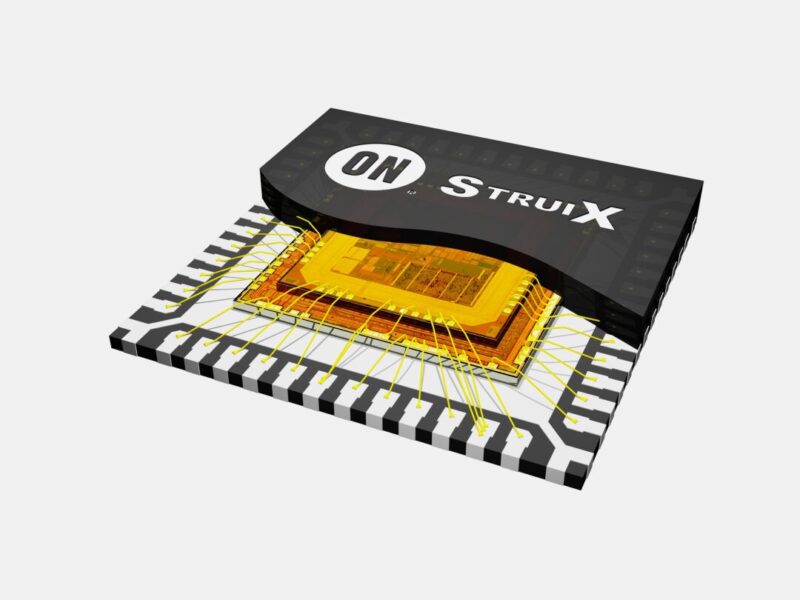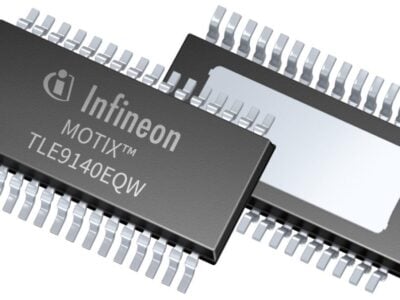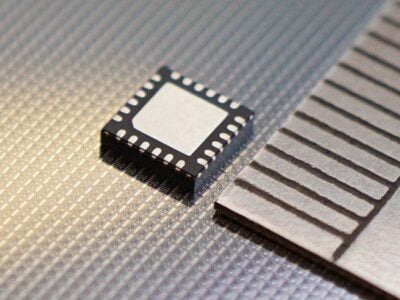
ARM-core-based, SiP for precision sensing in portable medical devices
ON Semiconductor created the Struix stacked-dice, system-in-package format to meet product development demands in the portable medical market; the semi-customisable SiP is aimed at precision sensing and monitoring in a variety of mobile medical electronics including glucose monitors, heart rate monitors and electrocardiogram analysers.
Struix (“stacked”) uses advanced die-on-die technology to integrate a custom-designed analogue front-end (AFE) on top of an industry-leading 32-bit ASSP microcontroller (ULPMC10), to form a complete miniature system. By using standard and customisable components, Struix offers medical device manufacturers the design flexibility required to create unique medical sensor interface applications while improving time-to-market and cost-effectiveness.
“Advanced stacking technology enables Struix to achieve greater system integration and occupy less board space in medical devices than standalone solutions,” according to Michel De Mey, senior director of consumer health solutions at ON Semiconductor. “ [it] reduces design time, development risks and the costs associated with fully customised solutions… the ULPMC10 microcontroller can be easily updated with future MCUs, without replacing the AFE, which is subject to FDA re-certification [for medical applications].”
The ULPMC10 microcontroller element….next
The ULPMC10 microcontroller element of Struix processes signals using a 32-bit ARM Cortex-M3 core running up to frequencies of 30 MHz. The microcontroller incorporates 512 kB on-chip Flash memory and 24 kB SRAM memory to store critical program and user data. Designed to improve battery life in portable devices, ULPMC10 is configured for minimal dynamic and static power demands. Through on-chip charge pump-based power conversion and regulation, the microcontroller can operate at a current consumption of less than 200 µA/MHz. While in standby mode, current consumption remains below 500 nA, a critical parameter for low-duty cycle medical devices.
The system’s power management subsystem monitors the device for fail-safe operation with a wide variety of battery voltages without requiring external components. The MCU also includes a 12-bit analogue-to-digital converter with three multiplexed inputs, a real-time clock, a phase-locked-loop, and a temperature sensor. ON Semiconductor offers a suite of development add-ins for IAR Systems to support the ULPMC10 microcontroller, including [ARM] CMSIS based software interfaces.
ON says that using its custom chip engagement model, medical device manufacturers can access a portfolio of intellectual property and design experience to meet the stringent feature and performance- level requirements of medical sensor applications.
ON Semiconductor; www.onsemi.com
 If you enjoyed this article, you will like the following ones: don't miss them by subscribing to :
eeNews on Google News
If you enjoyed this article, you will like the following ones: don't miss them by subscribing to :
eeNews on Google News




